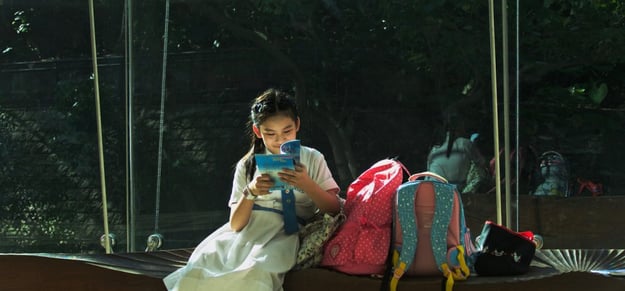Written by Anna Cockerille
"Curiosity may have killed the cat, but it's good for the student." So begins the summary of a study written up by the Association for Psychological Science on factors that affect learning. Researchers conducted a meta-analysis of over 200 studies with the premise that intelligence is hardly the only trait that determines academic success. They set out to pinpoint which other traits help students to do well in school. Two key traits they identified were conscientiousness, which could manifest as a willingness to attend class and follow through on assignments, and curiosity. These traits were so important that, when put together, they had as big an effect on academic performance as intelligence.
The researchers went on to note that the implications of the study are important in the workplace as well. Often a worker who is conscientiousness and curious can do just as well or better than one who is more traditionally skilled or has more relevant experience.
So what are some ways to encourage curiosity in the classroom?
- Model it. Don’t think you always need to have the right answer. When students ask something and you’re not sure (or even if you are), show them that it’s okay to admit you aren’t sure, and show them how you might research the question yourself.
- Value it. Think twice about evaluating students based on their ability to purely regurgitate information, and evaluate them instead on their process.
- Provision it. Consider the workshop model—the teacher provides a range of tips and strategies, tools, models of exemplary work, and goals. Then he lets the students go to it, each working with the available resources in their own way.
- Celebrate it. Whenever you can, compliment students on their risk-taking, their resourcefulness, and their bravery in forging paths through uncharted territory.
You may have noted already that in much of the Units of Study curriculum, students are taught to question. They formulate questions and attempt to answer them in their research and essay writing. They question character motives and authorial decisions in their reading. They question their own and each other’s thinking in small and large group conversations. As students grow in sophistication, so too can the sophistication of their questions grow. The curriculum is designed in just this way—to guide students toward more depth and greater facility in developing and answering their own questions, and letting curiosity guide their work.
Senior Lead Staff Developers Shanna Schwartz and Brooke Geller will lead the TCRWP community in a chat on Twitter this week on ways to encourage children’s curiosity and questioning skills. Please join us for a chat that is sure to have deep implications, across grade levels and subject areas.
♦ ♦ ♦
Each Wednesday night at 7:30pm eastern, The Teacher's College Reading and Writing Project hosts a Twitter chat using the hashtag #TCRWP. Join @ShannaBSchwartz & @brooke_geller to chat about curiosity and questioning in the classroom tomorrow evening.
♦ ♦ ♦
Not on Twitter? Take Heinemann’s free Twitter for Educators course here.
 Anna Cockerille, Coauthor of Bringing History to Life (Grade 4) in the Units of Study for Teaching Writing Series.
Anna Cockerille, Coauthor of Bringing History to Life (Grade 4) in the Units of Study for Teaching Writing Series.
Anna was a teacher and a literacy coach in New York City and in Sydney, Australia, and later became a Staff Developer and Writer at TCRWP. She served as an adjunct instructor in the Literacy Specialist Program at Teachers College, and taught at several TCRWP institutes, including the Content Literacy Institute, where she helped participants bring strong literacy instruction into social studies classrooms. Anna also has been a researcher for Lucy Calkins, contributing especially to Pathways to the Common Core: Accelerating Achievement (Heinemann 2012), and Navigating Nonfiction in the Units of Study for Teaching Reading, Grades 3–5 series (Heinemann 2010). Most recently, Anna served as an editor for the Units of Study for Teaching Reading, K–5 series.



